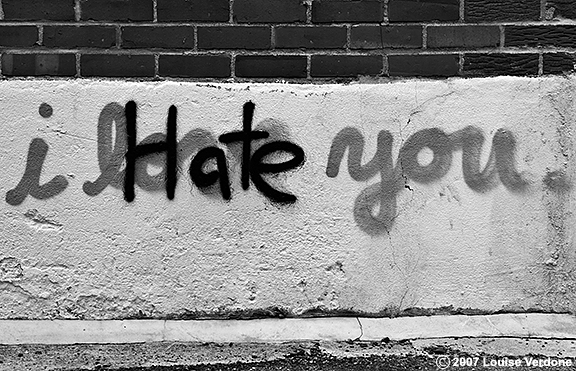
Graffiti as a ‘hate crime’
by Yair Frid, onGraffiti Removal , October 29, 2017

by Yair Frid, onGraffiti Removal , October 29, 2017
The amount of ‘hate crimes’ around the world is rapidly increasing. Every time it gets easier and easier to find stories about racist demonstrations, religious related hate crimes and terrorist attacks. The most recent display was the attack that a 20-year-old man did, ramming his car into a group of people in Virginia, who were protesting against a white supremacist rally. This kind of hate can also be displayed via less violent offences such as offensive graffiti. Even though it might seem harmless in comparison, it also represents the existence of hate and it could probably be the first step to bigger and more violent crimes. That is the main reason why the removal of offensive graffiti should be done in a prompt manner is essential.
Generally, graffiti is considered as an offence when there is no authorization from the property owner to paint over it. In many cities around the world is very common to find all sorts of graffiti, from street art murals with elaborated works to simplistic tags or even offensive symbols or words that target minorities, religious groups or anyone who seems different.
Just in the past few weeks, several examples of this kind of ‘hate crimes’ have been part of the news across the world. In New York, a synagogue and also a church were vandalised with disturbing graffiti. The synagogue, on the Lower East Side, was transgressed with a swastika under a banner that says ‘Hate has no home here’. Even though the two incidents were not related, NYPD of hate crimes are investigating them.
In Europe, obscene and racist graffiti was found on the rocks on Tudweiliog beach in a small town in Wales. The graffiti read ‘F*** Wales’ and ‘Welsh ***ts’ causing indignation and anger among the locals. Also in the UK, the new home of a Hindu family who recently moved from London to Liverpool, was attacked with offensive words and also Arabic phrases because they were mistaken for Pakistani Muslims.
In Canberra, a park in the north suburb of Giralang, was spray-painted with marks and a swastika in the footpath. Locals reported immediately to the police, but it was removed after three months, by the Canberra City Services. Members of the local government agreed that the graffiti should have been removed right away.
Graffiti removal services have to work immediately after an incident is reported because it makes the community feel unsafe, especially if it is an offensive as the previous examples. Other solutions such as anti graffiti coatings are excellent options to prevent these crimes.